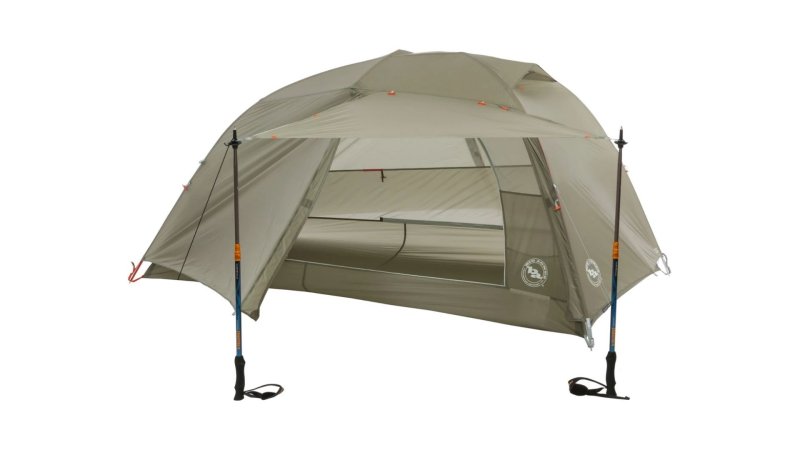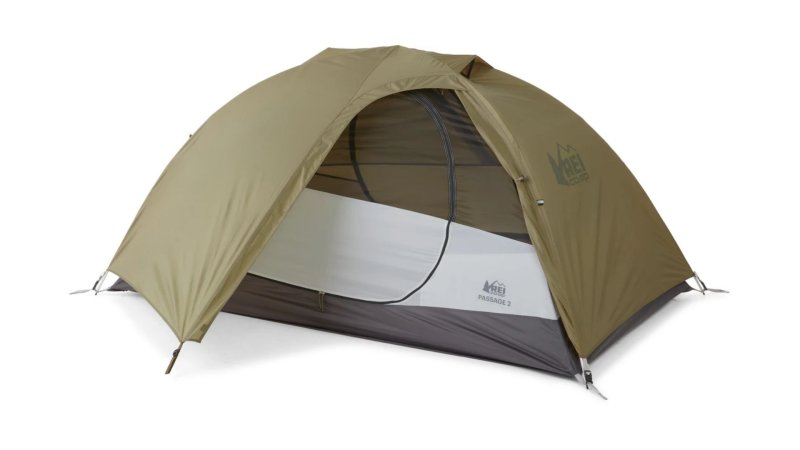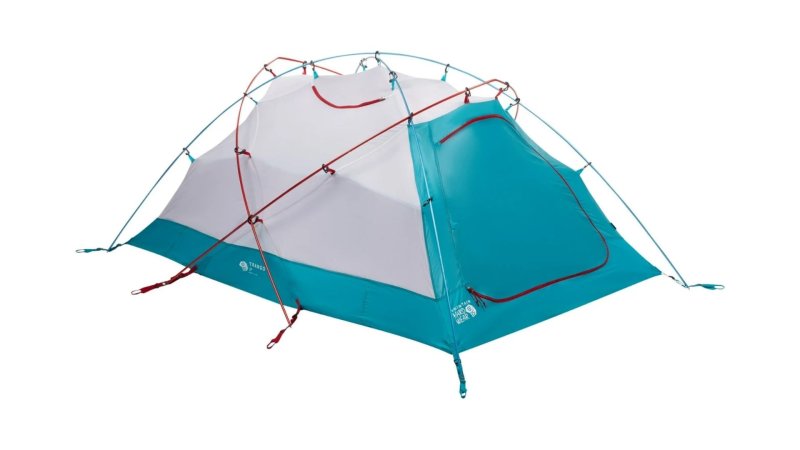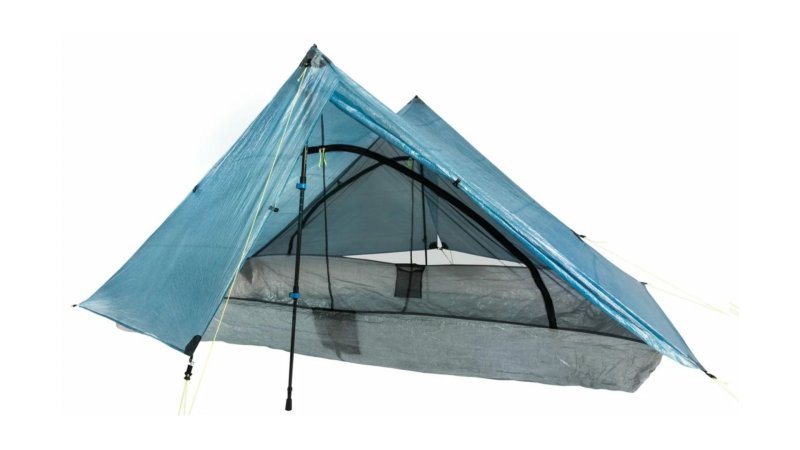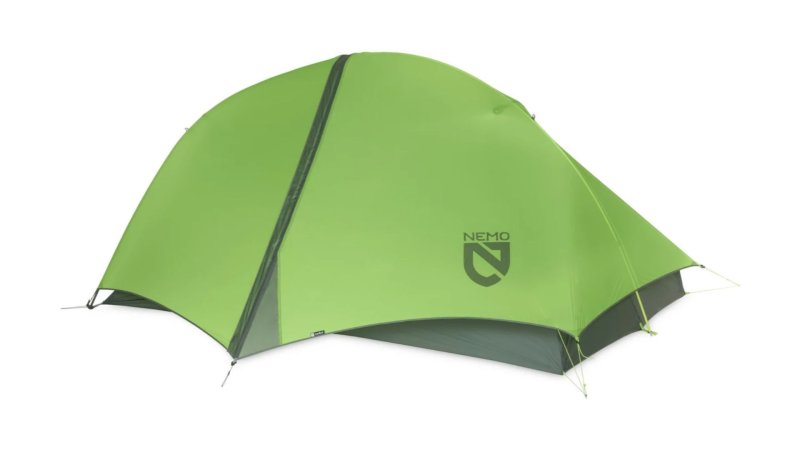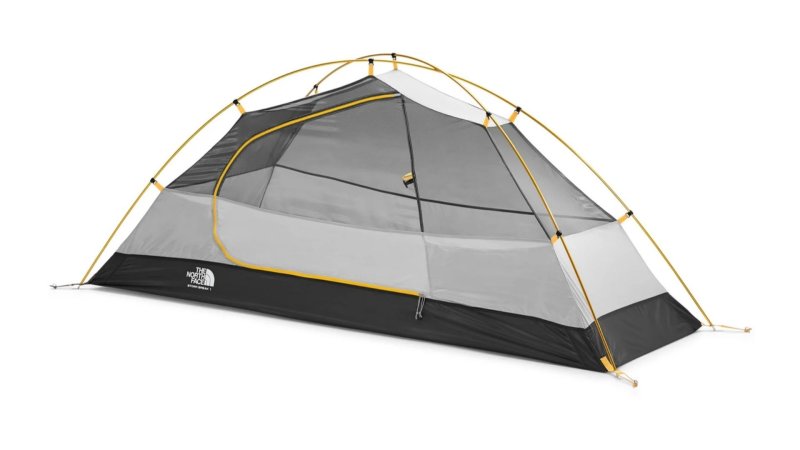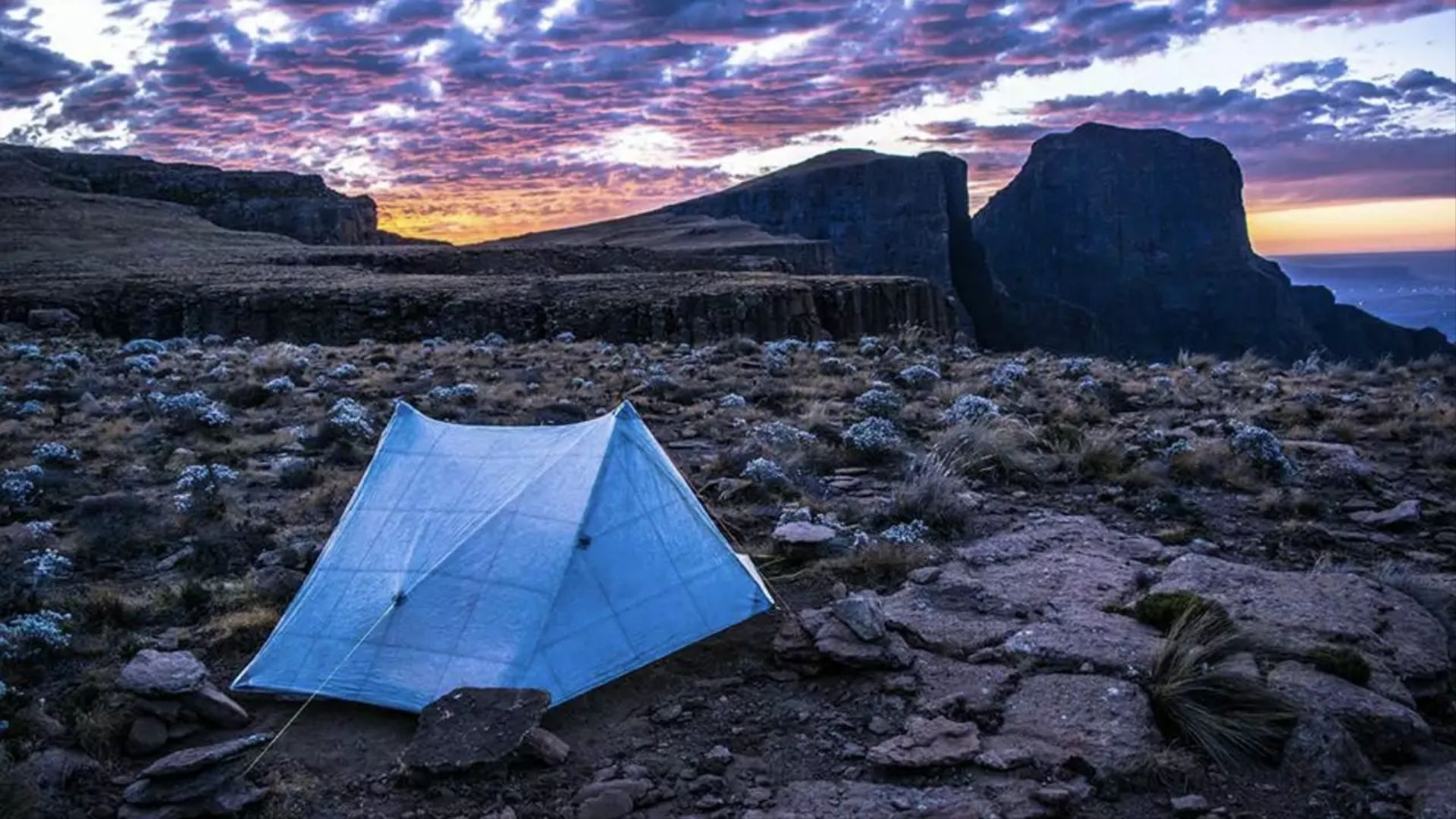

We may earn revenue from the products available on this page and participate in affiliate programs.
In the world of long-distance backpacking, we’re super concerned about weight, especially with backpacking tents. Your tent is one of the “big three” items you carry in terms of weight — the other two being your sleep system and your backpack itself. As the old minimalist saying goes: Less is more. Less weight is more distance, more enjoyment, and also more cost.
Backpacking tents are generally classified around two main characteristics: the number of sleepers, or capacity, and the weather conditions they will be used in. Three-season tents are generally designed for spring, summer, and fall use, while four-season tents tend to be made out of more rugged materials to withstand winter snow and high winds on mountains.
Methodology
I’m an experienced long-distance backpacker. I spent 20 years humping overdesigned, heavy, and poorly designed military backpacks and tents, and now am on a quest to seek the lightest, best designed, and most economical backpacking and mountaineering gear on the planet. I have completed more than 700 miles of the Appalachian Trail to date, and have also done some epic climbs in places like the Grand Teton, Rocky Mountain, and Mount Rainier National Parks. I’ve owned and used more than seven tents in my time — everything from ultralight three-season tents to mountaineering tents that feel like portable bomb shelters.
To find the best backpacking tents for 2022, I reviewed and used a variety of tents and also solicited the input of friends who spend extensive time in the outdoors and a few mountain guides I know and respect — people who use this gear professionally in some pretty hazardous conditions.
I specifically looked at the following criteria: weight, design, floor area, quality of materials, weather resistance, ease of use, and packability. I also gave consideration to other factors like unique innovations, advanced materials, and headroom. All told, I’m pretty confident you won’t go wrong with any tent on this list — I went after the best, but the trick is finding the right tent for your needs and uses.
All the backpacking tents in this review were selected based on personal ownership, performance reputation, hands-on inspection, interviewing other experts, and thoroughly reviewing manufacturers’ specifications. I take my time to get to know the strengths and weaknesses of each tent, and also check out the reviews of other experts just to make sure we’re not missing anything.
Best Overall
Big Agnes Copper Spur HV UL2 Tent
Pros
- Well-made
- Well-designed
- Great space per weight ratio
- Versatile; twin vestibules turn into sun awnings
- Roomy
Cons
- Expensive
- Footprint and gear loft not included
Product Specs
- Weight: 3 pounds 2 ounces
- Capacity: 2 sleepers
- Packed size: 19.5 x 6 inches
- Floor area: 29 square feet
- Head height: 40 inches
- Vestibule area: 9 square feet
- Number of seasons: 3
- Doors: 2
Best Value
REI Passage 2 Tent
Pros
- Simple design
- Quality build
- Easy to set up
- Weatherproof
- Stargazing
- Double doors and double vestibules
- Affordable
- Footprint included
Cons
- Heavier
Product Specs
- Weight: 5 pounds 10 ounces
- Capacity: 2 sleepers
- Packed size: 18 x 8 inches
- Floor area: 31 square feet
- Head height: 40 inches
- Vestibule area: 19 square feet
- Number of seasons: 3
- Doors: 2
Editor’s Choice
Mountain Hardwear Trango 2
Pros
- Bombproof design
- Roomy
- Easy to use
- Exceptional wind resistance
- Waterproof
Cons
- Heavier
- Pricey
- Bulkier
Product Specs
- Weight: 8 pounds
- 9 ounces Capacity: 2 sleepers
- Packed size: 24 x 8 inches
- Floor area: 40 square feet
- Head height: 38 inches
- Vestibule area: 12 square feet
- Number of seasons: 4
- Doors: 2
Best Ultralight Tent
Zpacks Duplex
Pros
- Unbelievably lightweight
- Packs small
- Simple design
- Easy to set up
Cons
- Expensive
- Requires trekking poles to set up
- Noisy material
Product Specs
- Weight: 1 pound 3 ounces
- Capacity: 2 sleepers
- Packed size: 12 x 6 inches
- Floor area: 28 square feet
- Head height: 48 inches
- Vestibule area: NA
- Number of seasons: 3
- Doors: 2
Honorable Mention
NEMO Hornet 2
Pros
- Lightweight
- Packs small
- Simple design
- Easy to set up
Cons
- Rainfly can be tricky to keep off the body
- Not totally free-standing
Product Specs
- Weight: 2 pounds 6 ounces
- Capacity: 2 sleepers
- Packed size: 19.5 x 5.5 inches
- Floor area: 27.5 square feet
- Head height: 39 inches
- Vestibule area: 14.2 square feet
- Number of seasons: 3
- Doors: 2
Best Solo
The North Face Stormbreak 1 Tent
Pros
- Lightweight
- Free-standing
- Easy to set up
- Affordable
- Stargazing
- Fastpacking-capable
Cons
- Footprint not included
Product Specs
- Weight: 3 pounds 7 ounces
- Capacity: 1 sleeper
- Packed size: 22 x 6 inches
- Floor area: 18.1 square feet
- Head height: 34 inches
- Vestibule area: NA
- Number of seasons: 3
- Doors: 1
Our verdict on backpacking tents
Backpacking tents are a no-brainer for people who want to carry the least amount of weight possible while gaining the maximum effective shelter possible. All of the tents reviewed today meet these criteria, although they widely vary in floorspace, price, and weight. I did my best in this review to cover most users’ needs. I’ve been sold (and remain sold) on the Mountain Hardwear Trango 2 as my tent of choice in the mountains, and I really like the Big Agnes Copper Spur for three-season use. For fastpacking with a super minimal setup, The North Face Stormbreak’s fly, poles, and footprint are a great option.
What to consider when buying backpacking tents
I have three main considerations when selecting a backpacking tent: weight, because you have to carry it everywhere you go; ease of setup, because I don’t want to be fucking around in the dark after a long day, especially in the cold with gloves on; and liveable space, because I want the largest amount of square feet at the lightest weight possible. Oh, and there’s a fourth: cost. Look for the least expensive tent that meets all your needs. You’ll want to have some extra cash for burritos and beer after your trip.
Types of backpacking tents
Free-standing
Free-standing tents can stand up on their own without the use of guylines and stakes. These tents generally use an X-pole design and are super easy and quick to set up — even with one person. Want to relocate it because your dumb ass just set it down on a ground hornet nest? No problem! Just pick it up by the poles and run like hell for a bit. Reposition and enjoy!
Non-free-standing
Many ultra lightweight tents are non-free-standing because the poles don’t have to be as strong and they’re held in place with tension from guy lines. They’re a bit harder to set up and definitely harder to reposition. With a bit of experience, you can set them up fairly quickly. With many, you can just use adjustable trekking poles and leave the tent poles at home, saving even more weight.
Three-season
Three-season tents are lighter and designed to be used in spring, summer, and fall. These tent designs prioritize low weight balanced with breathability/air flow and rain and wind resistance. They are designed to withstand rain downpours and some light snow, but many will collapse under heavy snow and excessive winds.They typically have large mesh areas for walls, more upright walls to maximize headroom, and fewer poles and lighter denier fabrics.
Four-season
When you go to the big hills or camp in winter, it’s no time to fuck around. The mountains can kill you. Hypothermia can kill you. So take a tent that’s built for the task. Four-season tents are designed to take punishing winds, heavy snow loads, so they’re made from heavier materials and have more poles. They also have a lot less ventilation and will have zippered ventilation areas and more rounded geodesic dome shapes. With four-season tents, the rain flys are also robust and cover the tent to the ground. Many are equipped with reinforcing points on the flys and are designed so the flys attach directly to the poles across the tent.
Key features of backpacking tents
Capacity
Most backpacking tents are designed for two sleepers. Some accommodate three or as few as one. To save weight, they’re much tighter than those big-ass circus tents people take car camping — the ones that sleep four or more campers. Tent floor plans vary, so try them out to make sure you fit comfortably with a buddy. I prefer two-person tents with large vestibules for additional gear storage out of the rain.
Weight
I like backpacking tents that are under four pounds. Pay attention to the specs as they have different weight statistics. Minimum trail weight accounts for only the tent body, rainfly, and poles. Packaged weight is everything the tent comes with — generally including stakes, guylines, repair kits, and footprints.
Packability
Backpacking tents are designed to take up as little space as possible when packed into a backpack. I often separate the poles and fly and give them to a buddy to carry, and I’ll take the tent body and stakes. I also use a stuff sack for the tent and another for the fly to really crush down the size.
Backpacking tent pricing
I’ve seen backpacking tents under $100 to tents over $800. Like most backpacking and climbing gear, the more you pay, the less it weighs, the more advanced the materials in the build, and the more functional the design.
Budget
If you can get a backpacking tent for under $160, you’re in the budget zone. Really check these tents out, especially the cheaper you go. Watch out for heavy materials, heavy poles, and poor weather resistance. With that said, you can find some good tents in this range.
Mid-range
I consider $160 to $300 to be mid-range for a backpacking tent. These tents will have all you need but might not be the lightest or have all the design features you want. Many are a good balance between weight and functionality.
Premium
Anything over $300 and you’re into the Gucci zone. If you really want to get silly and lay down some bank, check out the Hilleberg Anjan 2 GT for $875 — shaped like a bullet for fending off the wind.
Tips and tricks
The most important thing when choosing a backpacking tent is to pick one that looks cool and impresses the other hikers and especially the bears. Remember, a good-looking tent filled with hikers is essentially a big attractive burrito for a Kodiak bear. No, seriously, really shop around. Think about what you need and what you don’t. Make a list and compare. Thinking twice and buying nice is my motto. This will prevent you from buying a cheap or heavy tent that you’ll use a few times and then get frustrated with, and then buy the higher-quality tent you wanted in the first place. Oh, yeah, and also look for rock-solid warranties.
FAQs of backpacking tents
You’ve got questions, Task & Purpose has answers.
Q: How heavy should a tent be for backpacking?
A: What? Are you a masochist? It shouldn’t be heavy at all. Look to keep weights below four pounds — lighter if you can.
Q: What’s the difference between a camping tent and a backpacking tent?
A: Camping tents are generally large and sleep four or more people. They’re usually filled with screaming kids and are placed in KOA parks next to a hundred other tents filled with more screaming kids and a few noisy drunks. In short, they are a misery. Backpacking tents, on the other hand, are small, lightweight, and sleep one to three people. They are the tents you use when you want to get far into the woods and escape all the idiots.
Q: Should I get a single- or double-walled tent?
A: It depends. Cold and dry environments? Go with the single. Wet and hot? Go with the double.
